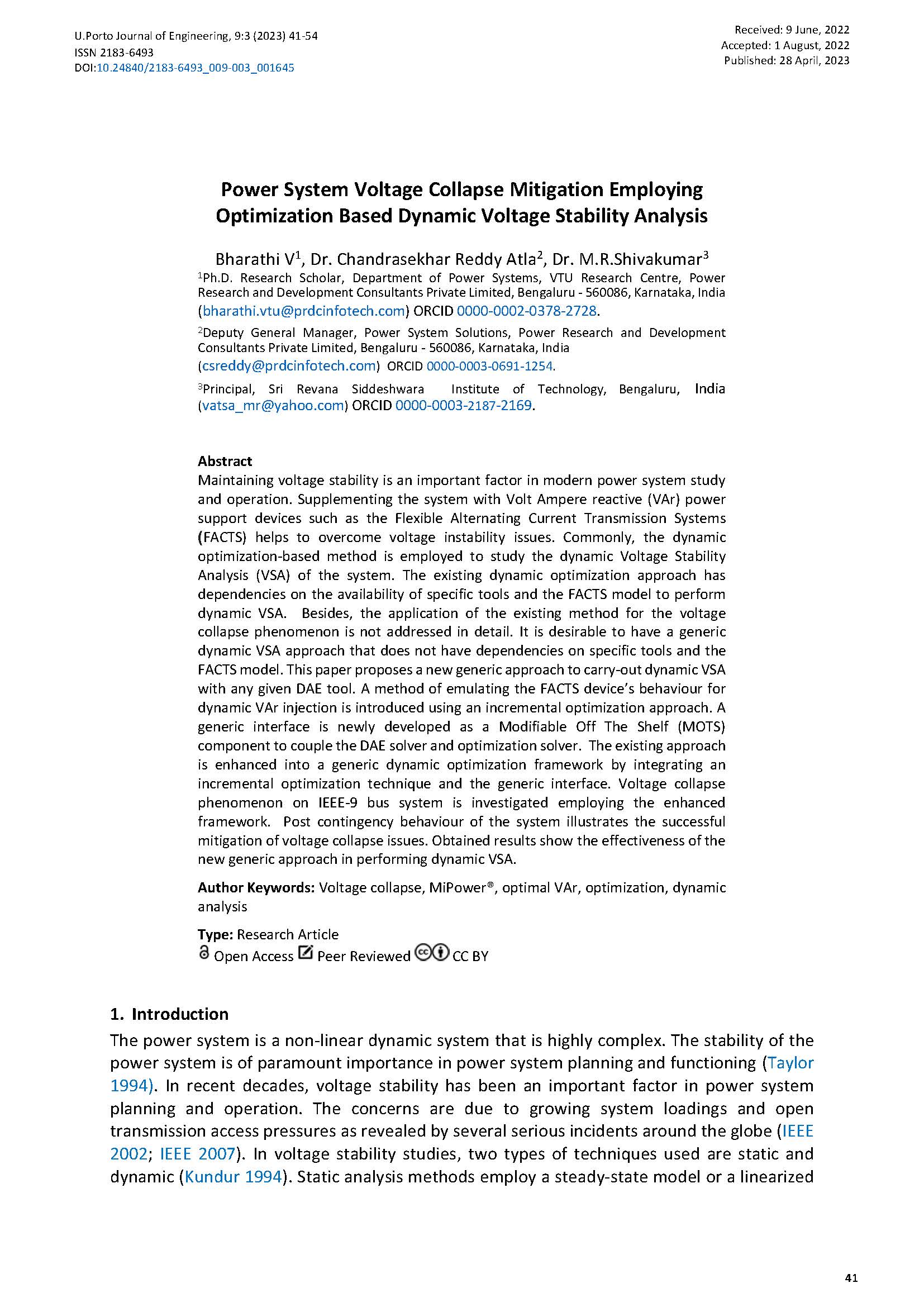Power System Voltage Collapse Mitigation Employing Optimization Based Dynamic Voltage Stability Analysis
Main Article Content
Abstract
Maintaining voltage stability is an important factor in modern power system study and operation. Supplementing the system with reactive power (VAr) support devices such as FACTS helps to overcome voltage instability issues. Commonly, dynamic optimization based method is employed to study the dynamic Voltage Stability Analysis (VSA) of the system. The existing dynamic optimization approach has dependencies on the availability of specific tools and the FACTS model to perform dynamic VSA. Besides, the application of the existing method for the voltage collapse phenomenon is not addressed in detail. It is desirable to have a generic dynamic VSA approach that does not have dependencies on specific tools and the FACTS model. This paper proposes a new generic approach to carry-out dynamic VSA with any given DAE tool. A method of emulating the FACTS device’s behaviour for dynamic VAr injection is introduced using an incremental optimization approach. A generic interface is newly developed as a Modifiable Off The Shelf (MOTS) component to couple the DAE solver and optimization solver. The existing approach is enhanced into a generic dynamic optimization framework by integrating incremental optimization technique and the generic interface. Voltage collapse phenomenon on IEEE-9 bus system is investigated employing the enhanced framework. Post contingency behaviour of the system illustrates the successful mitigation of voltage collapse issues. Obtained results show the effectiveness of the new generic approach in performing dynamic VSA.
Downloads
Article Details

This work is licensed under a Creative Commons Attribution 4.0 International License.
Authors who publish with this journal agree to the following terms:
- Authors retain copyright and grant the journal right of first publication with the work simultaneously licensed under a Creative Commons Attribution License that allows others to share the work with an acknowledgement of the work's authorship and initial publication in this journal.
- Authors grant the journal the rights to provide the article in all forms and media so the article can be used on the latest technology even after publication and ensure its long-term preservation.
- Authors are able to enter into separate, additional contractual arrangements for the non-exclusive distribution of the journal's published version of the work (e.g., post it to an institutional repository or publish it in a book), with an acknowledgement of its initial publication in this journal.
- Authors are permitted and encouraged to post their work online (e.g., in institutional repositories or on their website) prior to and during the submission process, as it can lead to productive exchanges, as well as earlier and greater citation of published work (See The Effect of Open Access).

